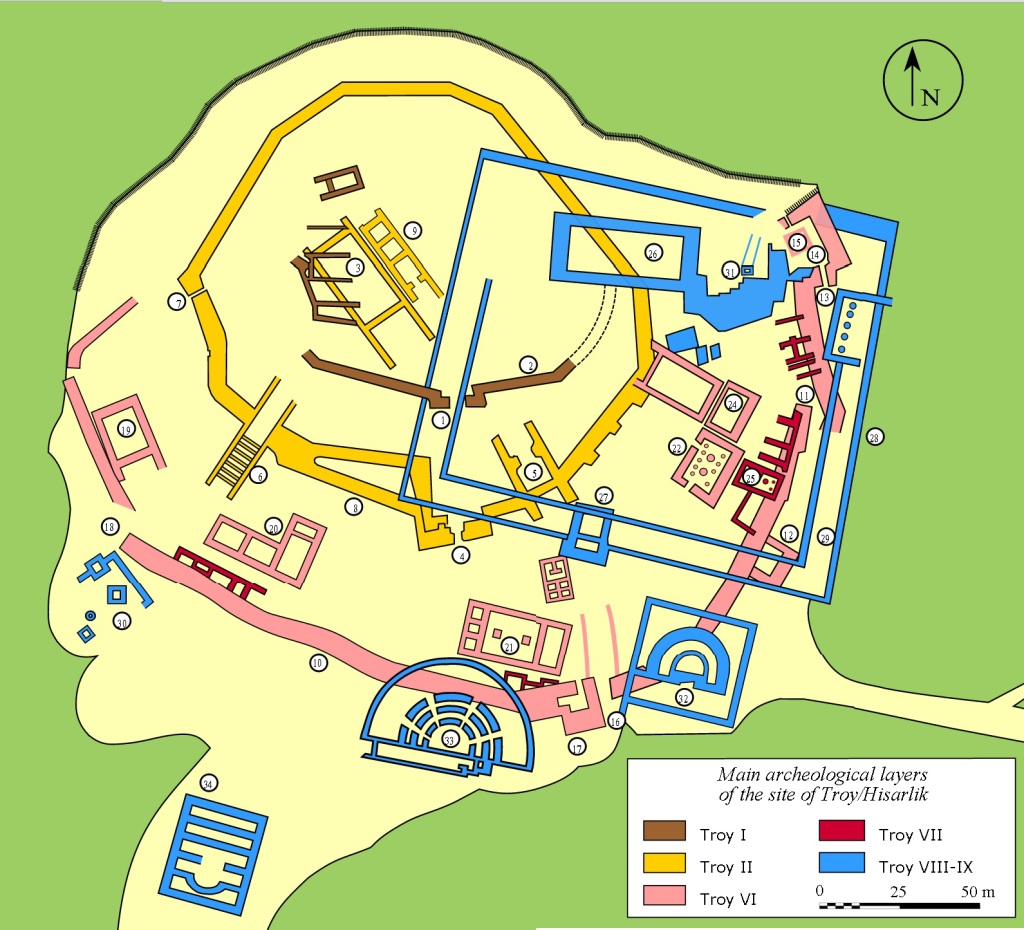The Illiad, one of the two popular epics attributed to Homer, is an ancient Greek story set during the Trojan War. The Illiad is probably one of the greatest tales of all time, retold for centuries in the courts of kings, before the thrones of emperors and is still a favourite of today. Although Homer stirred many outlandish deeds of mighty heroes and angry gods into his stories, the Trojan War is believed to have actually occurred and the ruins of the ancient city of Troy still exist.
It was a hot, dusty day when we leapt off the bus at the gates of Troy. Avoiding eye contact and all forms of acknowledgement we sped past the sellers waving cheap trinkets and prepared ourselves for an amazing journey through classical literature (wow, I made that sound really boring). Upon entrance we immediately noticed a wooden horse looming over us like an oversized toy, and we immediately rushed over to play with it. This project was built to resemble the renowned wooden horse used in Homer’s myth, a Greek trick that successfully captured the city from the Trojans.
After ten years of fighting the Greek forces were still unable to breach Troy’s defences and all the men were more than ready to accept defeat and return home. The war seemed lost for the Greeks until Odysseus, one of the brightest among them (or at least the most imaginative), thought up a crazy strategy to get them inside the walls– so crazy it just had to work. Within three days the Greeks constructed a wooden horse, an offering to Athena to allow them safe passage home, and then sailed away from Troy until they were out of sight. The Trojans, believing the war to have finally ended, brought the horse into the city as a trophy and celebrated their victory with much drinking, boozing, and especially quaffing. However, late at night when all the soldiers had drunk themselves to sleep, a secret cache of 40 Greeks crept out from the wooden horse’s belly, weapons in hand. They slew the guards, opened the gates, and signalled the Greek fleet of ships (that had been hiding behind an island) to return to the city. Now that the enemy had entered Troy’s impenetrable walls it was all over for the Trojans and the Greeks mercilessly conquered one of the greatest cities of antiquity.
Like school children, we excitedly clambered up into the belly of the beast, imagining ourselves as part of the legend, and just hung out there for a bit to escape the blazing sun.
After spending more time than we should have on the greatest playground set ever (and not letting the other kids have a turn), we continued our stroll down the streets of Troy. A surprising amount of the walls were still intact considering how old it was, and we let our imaginations go wild as we wandered through the maze of broken towers, ramps and unrecognisable piles of rubble, envisioning what once was.
One interesting fact about Troy, and what must have been extremely confusing for the archeologists, is that it has been rebuilt at least nine times all on top of each other. That’s nine layers of history dating all the way back from 3000 BC when it was just a simple mercantile colony, to 1300 BC when it became the massive, fortified city as describe in the Illiad, until the final Roman city of Illium was built atop the rest in 500 AD. Through earthquakes, fire and war, Troy was reborn from the ashes again and again until it was given up for a more favourable location at Constantinople, now Istanbul, and the Trojan capital was abandoned for good.

- Troy I 3000–2600 BC (Western Anatolian EB 1)
- Troy II 2600–2250 BC (Western Anatolian EB 2)
- Troy III 2250–2100 BC (Western Anatolian EB 3 [early])
- Troy IV 2100–1950 BC (Western Anatolian EB 3 [middle])
- Troy V: 20th–18th centuries BC (Western Anatolian EB 3 [late])
- Troy VI: 17th–15th centuries BC
- Troy VIh: late Bronze Age, 14th century BC
- Troy VIIa: c. 1300–1190 BC, most likely setting for Homer’s story
- Troy VIIb1: 12th century BC
- Troy VIIb2: 11th century BC
- Troy VIIb3: until c. 950 BC
- Troy VIII: c. 700–85 BC
- Troy IX: 85 BC–c. AD 500
Before leaving Troy and continuing on our journey up the Aegean coast, I bid a heartfelt goodbye to that legendary place which had been in my mind since I was a kid when I had first heard Homer’s epic tale. The deeds of mighty Achilles, Ajax, Hector, Odysseus and many other heroes that were immortalized in the myth became real in the ruins of this once great city. Was there really a Helen of Troy, a woman whose beauty launched a thousand ships? Was there a Trojan horse, a clever ruse that decided a remarkable victory for the Greeks? Where does the myth end and history begin? Only mere fragments of the past remain and some of these mysteries may never be resolved, but I’m sure the story will go on in the minds of generations to come.






